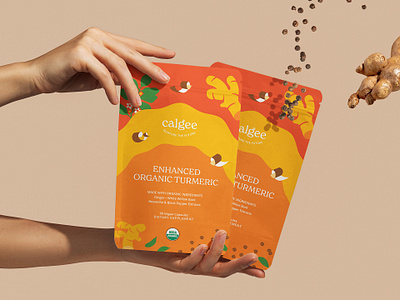The place To start out With High – Purity Di – Arginine Malate Raw Material?
 61.Naffakh M, Shuttleworth PS, Ellis G. 2015. Bio-based polymer nanocomposites primarily based on nylon 11 and WS 2 inorganic nanotubes. With the event of environmentally friendly substitutes, the bio-based nylon will improve the competitiveness of nylon. Therefore, investigating the potential for synthesizing oligomeric amide in residing organisms will be very interesting. 2009. The ATP-dependent amide ligases DdaG and DdaF assemble the fumaramoyl-dipeptide scaffold of the dapdiamide antibiotics. Di-arginine Malate 2:1 API manufacturing, needed to be activated as acyl phosphate intermediates earlier than being condensed with nucleophilic substrates (amines or thiols), and then a tetrahedral intermediate was formed by a nucleophilic attack, which in turn formed an amide bond (82-84). Although the research on the catalytic mechanism of amide bond synthetase is proscribed, primarily based on the present enzyme system, it has great potential to give the amide synthetase new substrate activity (diamines and dicarboxylic acids) by engineering enzyme construction using numerous enzyme modification and design tools, which will likely be significant for the entire-cell manufacturing of oligomeric polyamide.
61.Naffakh M, Shuttleworth PS, Ellis G. 2015. Bio-based polymer nanocomposites primarily based on nylon 11 and WS 2 inorganic nanotubes. With the event of environmentally friendly substitutes, the bio-based nylon will improve the competitiveness of nylon. Therefore, investigating the potential for synthesizing oligomeric amide in residing organisms will be very interesting. 2009. The ATP-dependent amide ligases DdaG and DdaF assemble the fumaramoyl-dipeptide scaffold of the dapdiamide antibiotics. Di-arginine Malate 2:1 API manufacturing, needed to be activated as acyl phosphate intermediates earlier than being condensed with nucleophilic substrates (amines or thiols), and then a tetrahedral intermediate was formed by a nucleophilic attack, which in turn formed an amide bond (82-84). Although the research on the catalytic mechanism of amide bond synthetase is proscribed, primarily based on the present enzyme system, it has great potential to give the amide synthetase new substrate activity (diamines and dicarboxylic acids) by engineering enzyme construction using numerous enzyme modification and design tools, which will likely be significant for the entire-cell manufacturing of oligomeric polyamide.
The synthesis of polyamide is the strategy of formation of an amide bond. In contrast to the C4 pathway of 1,3-propanediamine, this course of doesn't have to consume ATP, however the theoretical yield of 1,5-diaminopentane for glucose is decrease than that of 1,3-propanediamine. As shown in Fig. 1 and 2, the synthesis of diamines usually requires the participation of l-glutamate, l-aspartate, or pyruvate. The yield of 1,5-diaminopentane was improved to 300 mmol/mol glucose by supplementing the pyridoxal cofactor (46). Moreover, Kind et al. Eventually the yield of 1,5-diaminopentane reached 223 mmol/mol glucose with out supplementing the cofactor. Finally, after enlarging the fermentation scale from a 500-ml flask to 7 liters, the titer of 1,5-diaminopentane reached 205 g/liter beneath the optimal situations, particularly, 35% ethanol focus, 2-g/liter cell concentration, and 20-min permeabilization time. Furthermore, 1,5-diaminopentane reached the very best titer so far (220 g/liter) with the yield 98.5% when the concentration of l-lysine-HCl was 400 g/liter and the cell concentration was 3.5 g/liter.
Recently, there have additionally been some breakthroughs within the industrial fermentation production of 1,5-diaminopentane. Based on an industrial l-lysine-producing pressure, the titer of 1,5-diaminopentane reached 103.Eight g/liter in a 2.5-liter fed-batch culture by integrating ldcC from E. coli into the lysE locus of C. glutamicum PKC (53). In addition, Rui et al. 34.Hasegawa T, Hashimoto K, Kawasaki H, Nakamatsu T. 2008. Changes in enzyme activities on the pyruvate node in glutamate-overproducing Corynebacterium glutamicum. 84.Attwood PV. 1995. The structure and the mechanism of motion of pyruvate carboxylase. 2001. Pyruvate carboxylase is a major bottleneck for glutamate and lysine manufacturing by Corynebacterium glutamicum. 31.Nguyen A, Schneider J, Reddy G, Wendisch V. 2015. Fermentative manufacturing of the diamine putrescine: system metabolic engineering of Corynebacterium glutamicum. 52.Naerdal I, Pfeifenschneider J, Brautaset T, Wendisch VF. 29.Schneider J, Eberhardt D, Wendisch VF. Based on the reported synthesis pathways of diamines, the stoichiometric equations of 1,3-diaminopropane, putrescine, and 1,5-diaminopentane have been obtained (Table 2) (14-17). The C4 pathway of 1,3-diaminopropane solely requires the participation of 1 mol glucose, 4 mol NH3, 4 mol NADH, and 2 mol ATP. In order to understand the synthesis of whole bio-based mostly nylon, in advancing the development of bio-based mostly diamines, the bio-primarily based production of necessary nylon monomer dicarboxylic acid has also achieved outstanding outcomes, such because the bio-primarily based synthesis of adipic acid (64). Based on bio-based mostly diamines and dicarboxylic acids, bio-based nylon fifty six (65) and nylon 510 (49) have been prepared.
Following this development, with the additional enchancment of bio-primarily based diamines (including putrescine and 1,6-diaminohexane), the synthesis of all-bio-primarily based nylon, resembling nylon 46 and nylon 66, will eventually be realized within the close to future. Polymerization reactions between bio-based mostly diamines and bio-primarily based dicarboxylic acids will turn out to be necessary for preparing bio-based nylon supplies. With the event of other bio-based mostly monomers, corresponding to dicarboxylic acids (64), researchers are paying more consideration to the application of bio-based mostly diamines in the synthesis of nylon materials. Compared, the C5 pathway of 1,3-diaminopropane requires more glucose and the additional particular cofactor dAdoMet but can synthesize NADPH, NADH, and ATP. This was considered one of causes that the ODC pathway was mostly used within the synthesis of putrescine. In one study (58), adipic acid was transformed to 1,6-diaminohexane successfully in a one-pot biocatalytic transformation using carboxylic acid reductases (Cars; e.g., MAB4714 from Mycobacterium chelonae) and transaminases (TAs; e.g., SAV2585 from Streptomyces avermitilis and putrescine TA PatA from E. coli) (route 3, Fig. 2). This cascade response required some cofactors, including ATP, NADPH, and an amine donor (l-Glu or l-Ala), and a cofactor regenerating system was employed.